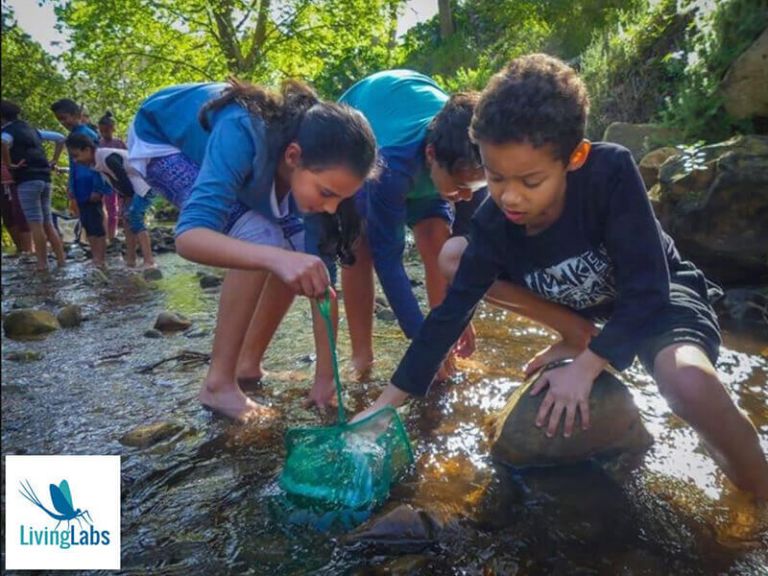St Joseph’s Marist College Eco-Club excursion to the Liebeek River
On Wednesday 27 September 2017 the Cape Leopard Trust #EnviroEdu team took the St Joseph’s Marist College eco club down to the Liesbeek River.
It was a beautiful day, the sun was out and the strong smell of Spring hung in the air. The learners’ were all full of excitement having been told that today they would be getting wet and have the chance to explore the river.
As we got to the Fernwood Park section of the Liesbeek River we were met by the very enthusiastic Living Labs team, Jeremy and Jordan. The Cape Leopard Trust has partnered with Living Labs before, and we are always enriched by the experience.
Immediately Jeremy and Jordan had grabbed the attention of the 11 learners’. As we looked at the importance of a river and why they are necessary in urban settings, the learners were very interested to find out all about what lives in this river, where it comes from and where it is going.
After this the conversation was led to why it is important to look after the rivers, and how we can tell if it is in a bad way or not. The learners’ were now very excited as this led us to the part where we get wet.
Using nets, hands and feet the learners’, in three groups, moved sand, plants and stones around in the river, catching all the invertebrates that were stirred up. After ten minutes of intensive capture, we then released what we had caught into trays of water to see what critters we had managed to find in the river
bed. The learners and educators alike where amazed to find so many different organisms living in the river, not only that, but they were shocked by what these tiny creatures actually looked like. It is amazing to share a river with some of these interesting creatures.
This is called a Mini-SASS (South African Scoring System) test, and using the data one gets you can determine a ‘score’ for the river. A high score would mean that the river is healthy as highly sensitive animals may have been found. A low score for the river would mean that the river is not in a good state
and only hardy species were found.
At the end of this little experiment we then gathered all the numbers and data from each groups’ tray and found that the score for this part of the river was not as high as it should be. The learners’ then discussed why they think it may not be as healthy as it should.
The reasons given were all those that suggest that looking after our rivers is extremely important, it is also something we can, and need to, all do.
After all this excitement and fun we sadly had to say goodbye to the Liesbeek and the Living Labs team.
We would like to thank Jeremy and Jordan of Living Labs for the use of all their equipment, expertise and enthusiasm. It truly was a very special afternoon and we are sure that the learners’ will remember this for months to come.

















